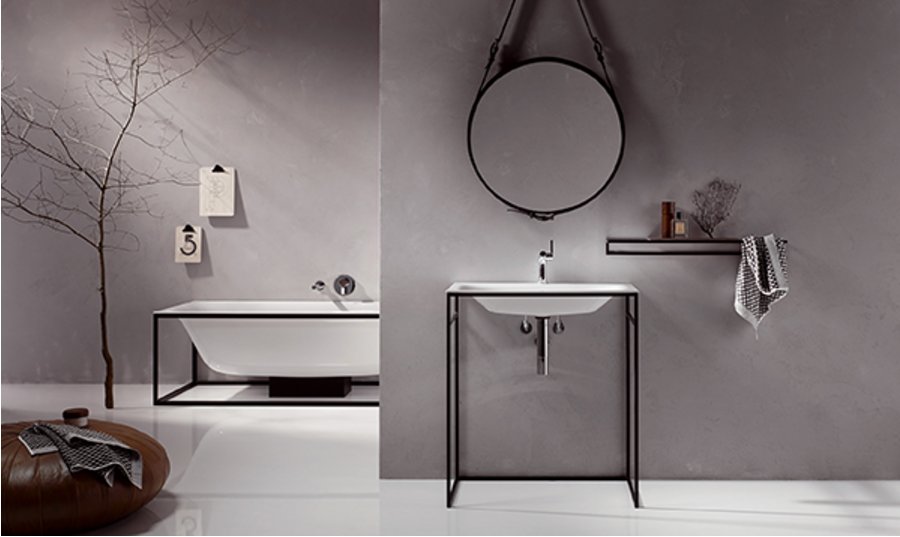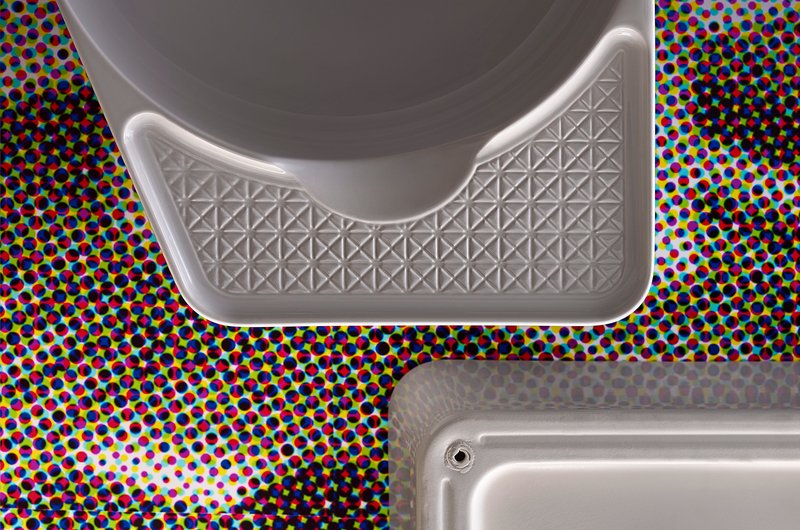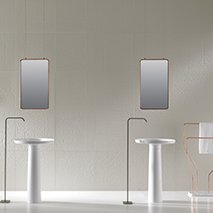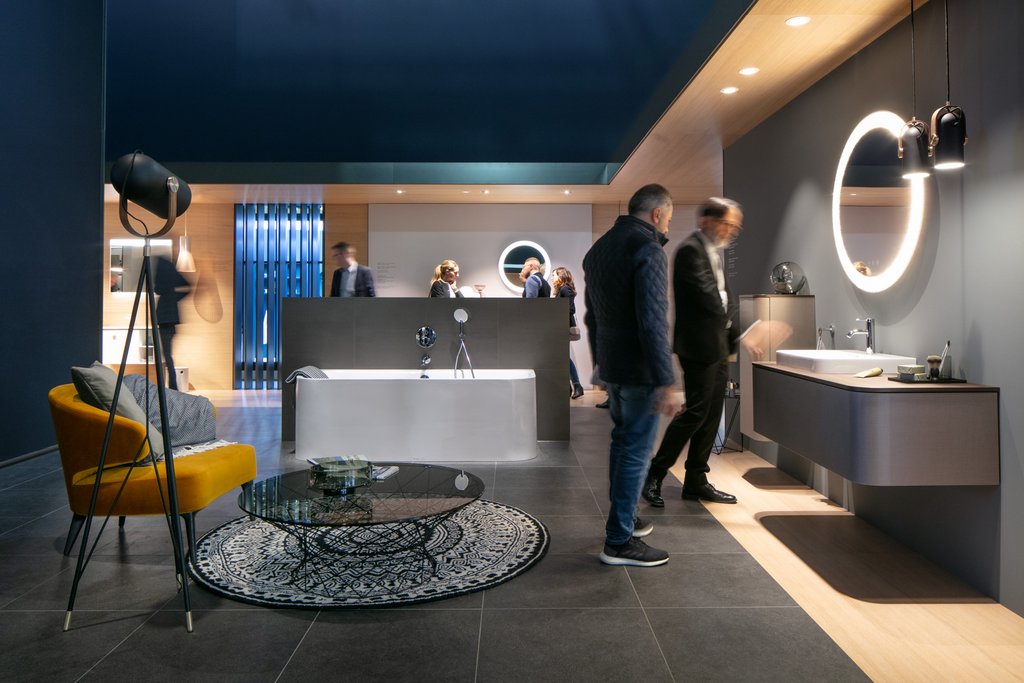The implementation of this new product category is directly related not just to new production technology but to material innovations as well. Ceramic specialist Laufen, for instance, was showing its Val collection, which was developed in collaboration with German design star Konstantin Grcic. The innovative ceramic composite permits extremely thin-walled shapes and tight radii – with the result that suddenly, the ceramic washbasins look incredibly light and speak an extremely understated design language. Other ceramic producers have followed suit. At the same time, the success of these minimalist sanitaryware products does not appear to depend entirely on a new material; it would seem that the innovative washbasins are very much in line with the spirit of the times and current tastes as well. Because this new lightness isn‘t restricted to washbasins: it is apparent in other product categories too. Amongst the pioneers are bathtub specialists Bette and design studio Tesseraux + Partner: an open frame construction supports the tub and shows off the actual (inner) shape of the steel enamel bath. Different colours and a very transparent overall effect permit totally new interior designs. Matching washbasin stands and add-on modules are also available to complete the new look. At the same time, in keeping with the current “away from the wall” trend, the design allows the products to be positioned anywhere in the room. The Bowl collection by Spanish bathroom brand inbani is no less striking (design: Arik Levy). With the right accessories, the interior design can create a very light, decorative impression. And this new approach to bathroom design adds a welcome splash of colour too. Thanks to the latest ceramic and steel enamel tubs, the “new” lightness in the bathroom initiated by designer couple Ludovica and Roberto Palomba years ago as a foray into new stylistic territory (Kaos bathtub for Kos) now stands every chance of becoming a bestseller.




